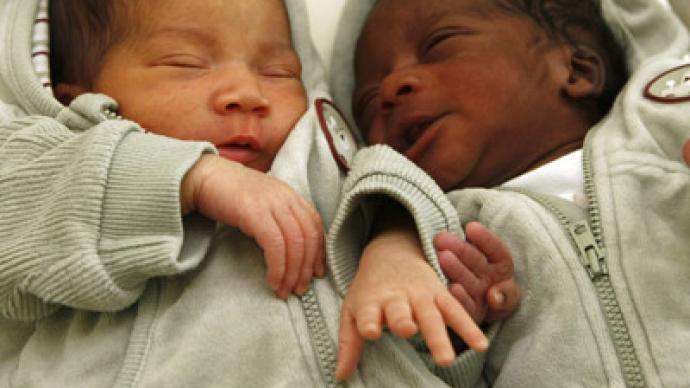Minority report: White births no longer majority in the US

For the first time in US history, racial and ethnic minorities outnumber its white majority – white births make up fewer than half the children born in the country, according to the US Census Bureau.
The new 2011 census, which was made public on Thursday, reveals non-Hispanic whites accounted for 49.6 per cent of all births in the 12-month period that ended last July. The minorities – Hispanics, blacks, Asians and those of mixed race – made 50.4 per cent in total, with Hispanics at 26 per cent, blacks 15 per cent, and about 4 per cent Asian. That compares with a 37 per cent ratio in 1990.The survey however shows births actually have been declining for both whites and minorities, as many women postponed having children during the economic recession. But the drop since 2008 has been larger for whites, at 11.4 per cent, compared with that of 3.2 per cent for minorities. Whites still represent the single largest share of all births and will remain a majority for some time. But the fact remains that a younger generation is being born in which minorities are now the majority. And the whites are aging – the median age for non-Hispanic whites is 42, meaning the bulk of women are moving out of their prime childbearing years. In comparison, the median age of US Hispanics is 27.6 years. Together with Asians, they comprise the two fastest-growing minority groups. Hispanics also have high fertility rates: seven births for every death.In four US states – Hawaii, California, New Mexico and Texas – as well as the District of Columbia, the minority populations have already exceed 50 per cent. The counties of other states follow the tendency. Maverick County, Texas, had the largest share of minorities at 96.8 per cent, followed by Webb County, Texas, and Wade Hampton, Alaska, both at 96 per cent.All of this rings alarm bells with some experts, who say it brings broad implications for the country’s economy, political life and its identity.The New York Times quotes William H. Frey, the senior demographer at the Brookings Institution, as saying the most urgent aspect of the change is education. A college degree has become the most important building block of success in today’s economy, but blacks and Latinos lag far behind whites in getting one. Just 13 per cent of Hispanics and 18 per cent of blacks have a college degree, compared with 31 per cent of whites. “This is a polite knock on the door to tell us to get ready,” the newspaper quotes Ruy Teixeira, a senior fellow at the Center for American Progress. “We do a pretty lousy job of educating the younger generation of minorities. Basically, we are not ready for this.”Marcelo Suarez-Orozco, co-director of Immigration studies at New York University also stresses that educating young minorities is of critical importance to the future. It took immigrants several generations to assimilate through education. Americans today cannot afford to wait that long, as they struggle to compete with countries like China.Some, however, see it as a huge advantage. Professor of policy, planning and demography at the University of Southern California Dowell Myers brings as example European societies with low levels of immigration, which now have young populations that are too small to support larger aging ones. “If the US depended on white births alone, we’d be dead,” he said. “Without the contributions from all these other groups, we would become too top-heavy with old people.”













